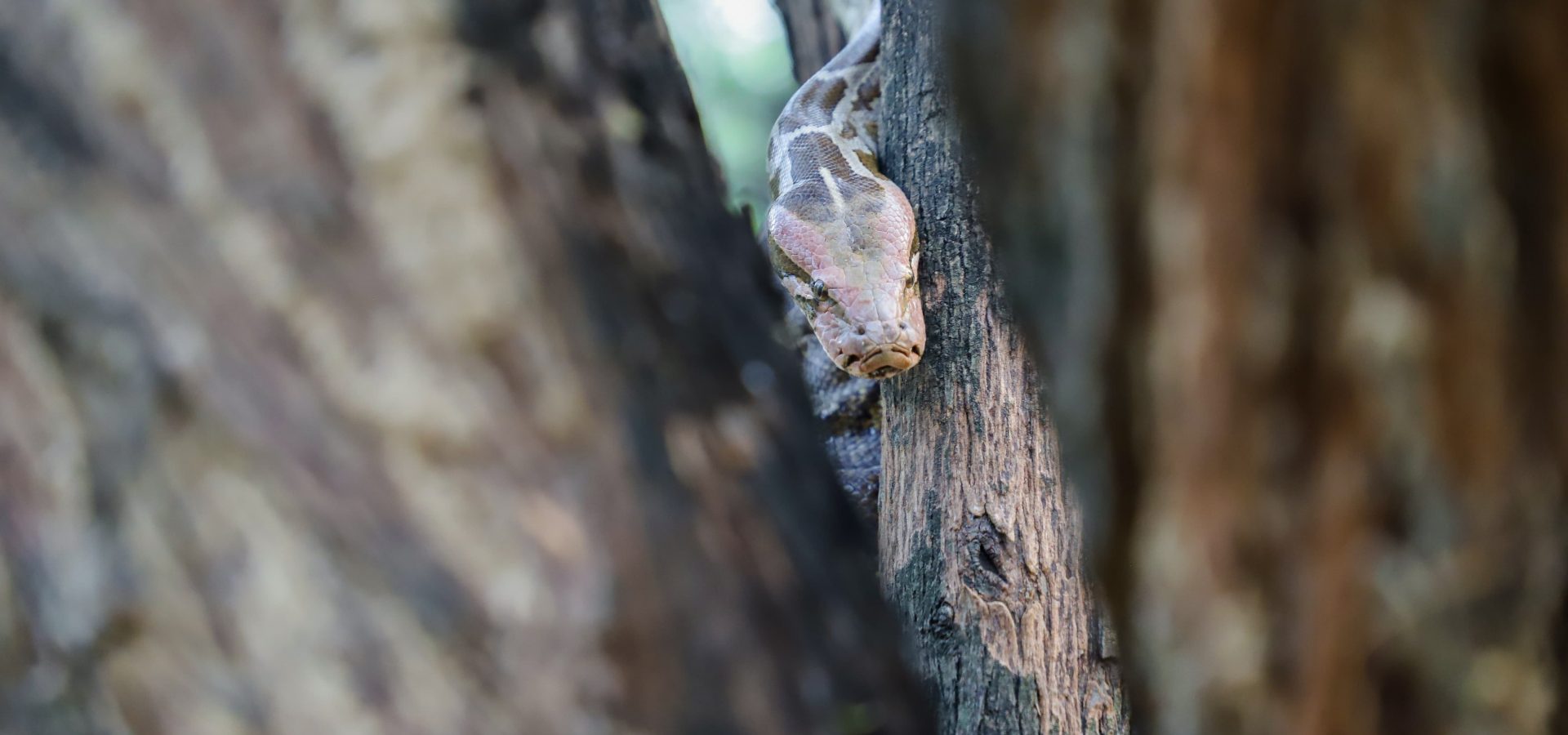Wildlife SOS launches an exciting series that explores animal senses! While some animals have a heightened sense of smell, some rely on their strong sense of sight to navigate. There are animals with an ability to hear sounds at extraordinary frequencies. Whether it is their unique touch receptors or an impressive sense of taste, every animal finds a fitting place in the ecosystem of its wild habitat.
Read on to know more about the olfactory sense animals have!
The nose possesses a powerful sense, allowing living beings to respond in various ways. While humans primarily use their nasal cavity for smelling, animals leverage their noses to extract essential information that they get from the smell, such as the presence of potential mates, predators in their surroundings, and the food that they require. For vertebrates, the sense of smell, or olfaction, takes place in a structure called the olfactory bulb that lies in their forebrain. Unlike humans, whose olfactory bulbs are relatively small, mice have olfactory bulbs 200 times the size of humans, while dogs have bulbs 40 times larger. Let’s take a look at some of the animals that demonstrate fascinating olfaction!
Elephants
An elephant has approximately 2,000 olfactory receptor (odour detecting) genes, the highest number discovered among mammals so far. These contribute to the mammal’s highly advanced sense of smell. In comparison, humans only have 400 of these genes. The elephant’s olfactory sensors are placed in its brain rather than its trunk, but the latter acts as a multipurpose appendage similar to a human hand, especially while foraging. For an elephant to identify food, it is not vision that it relies on primarily, but the smell it procures from the tip of its elongated trunk. And that’s not all! Scientists have also suggested that the elephant’s exceptional memory may be linked to its enhanced ability to recollect the smells.
Elephants are known to even sense water sources that are located as far as 19 kilometres away! The reason why they sway their trunks back and forth, or wave them constantly, is to gather the new odours that are both close and distant. When an elephant inhales the smell, a complex process takes place within the nasal cavity’s curled bones that are called turbinals. The seven olfactory turbinals of an elephant host millions of olfactory receptor cells that help the animal distinguish between the various scents.
Snakes
Now, snakes aren’t exactly known for their 6/6 vision or keen hearing, but their skilful senses lie most in the olfactory department. While we humans rely on our noses to perceive odour, snakes use their tongues instead to trace different smells. Yes, tongues! These slithery reptiles display incredible olfaction as they catch scent particles in the air by flicking their forked tongues out. Once the tongue has done its job, it goes back to the roof of the snake’s mouth to meet an olfactory organ called the Jacobson’s organ. This organ then sends signals to the snake’s brain to indicate if those scent particles are from a tasty meal, a potential threat, or the general surroundings. Talk about having a tongue for a nose!
Bears
After elephants, come bears that are widely acknowledged to possess one of the most superior senses of smell among all terrestrial animals. To put this into perspective, a dog’s olfactory capabilities can surpass those of humans by a factor of 100, but a bear’s sense of smell is estimated to be 2,100 times more sensitive than a human’s! The neurological basis for a bear’s remarkable olfactory ability lies in its olfactory bulb. Interestingly, this is at least five times larger than the one found in human brains, despite the overall size of a bear’s brain being only one-third of a human’s! Bears also have highly developed noses than humans do, with more nasal tissue, olfactory receptors, and a larger surface area that can detect the scents as they breathe.
Bees
You read it right! Bees too rely on olfactory cues as an important aspect of their survival. When the weather is right, bees can catch the fragrance of flowers blooming as far as two kilometres away. They can also smell surroundings 20 times farther than we ever could.
Communication among honeybees involves both movement and scent. Using what is known as a waggle dance, they can successfully convey the distance and direction of the food source in their swarm! A scent gland called the Nasonov gland, situated near the base of a honeybee’s abdomen, releases pheromones, a chemical substance, when it recognizes a rich source of nectar, a site to nest, recognition of kin, or a potential threat. By releasing the scent with the message, bees can successfully alert or attract fellow bees.
Each beehive possesses a distinct scent as well, acting as a form of identification for its members. For instance, guard bees among the bee species are equipped with antennae that contain olfactory receptors, and they use this scent recognition system to ensure that only hive members get entry. Intruders with unfamiliar scents are immediately detected and warded off.
After exploring their stunning sight and extraordinary abilities to hear, we now have an understanding of how animals admirably use their olfactory expertise in their daily lives. Not only smelling, but their unique structure of sniffing can also dictate the meaningful activities that they pursue each day as well. To read more of such intriguing articles on wildlife, subscribe to our newsletter by clicking here.





